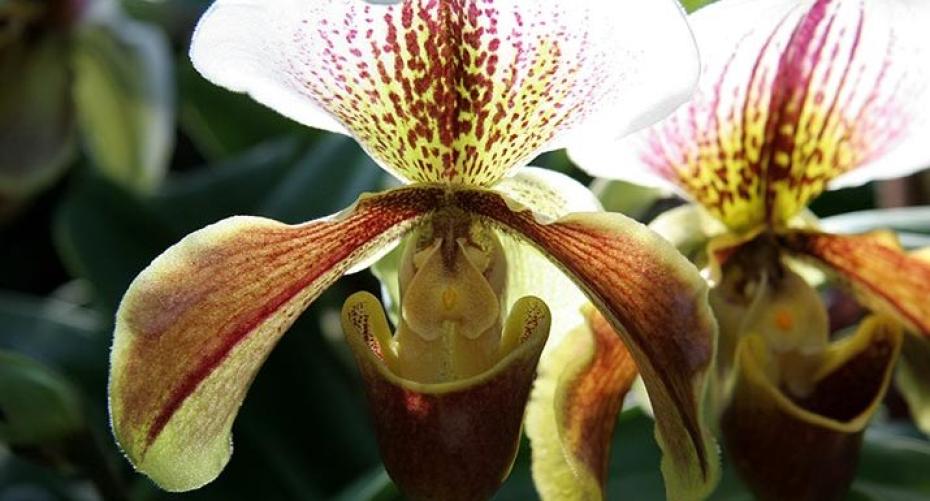Slipper orchids are unusual, exotic and not too difficult to care for
There are over 60 species of this orchid growing in diverse conditions from the high hills of northern India to the tropical lowlands of the Phillipines and South America. Most of them are terrestrial but there are some growing on trees and rocks. They are small to moderate in size. Their main flowering season is from mid-Autumn to late Spring. They fall into two groups: the warm growing types which have mottled leaves and the cool growing with plain green leaves. Both groups need cool nights in spring when they are setting buds for the Autumn.
Light
They are a shade loving orchid so need to be kept out of direct sunlight.
Temperature and Humidity
Cool species need a minimum night temperature of 13C (55F), while warm species need it a little warmer 16 – 19C (60 – 65F). Both need at least a 5C (40F) rise during the day. Both need daytime temperatures of 21 – 27C (70 – 80F); they will tolerate short periods of higher temperatures. Both hot and cold draughts will cause bud drop.
Watering
They require a regular and constant supply, keeping it out of the crown as this will cause the plant to rot. The growing medium needs to be kept just damp not wet, so watering every 7 – 10 days should suffice. Water early in the day so any moisture on the foliage has time to dry out before night.
Feeding
Feed with normal garden high potash feed, such as tomato food, at a quarter strength every other watering. Clean water is needed in-between feeding to flush out any accumulated salts, which will damage the root system.
Re-potting
They need a growing medium which is free draining but retains a little moisture, small chipped bark with added Perlite is ideal. Re-pot in Spring after flowering before the growing medium decomposes. Pot up into a pot one size larger than the plant is in currently. Keep watering to a minimum but keep up humidity levels.
Re-flowering
They re-flower on the new growth when it has matured. Each growth flowers only once and needs removing once it dies.


